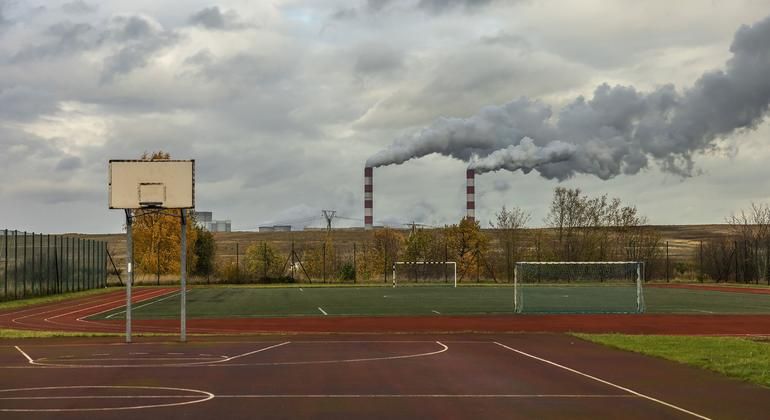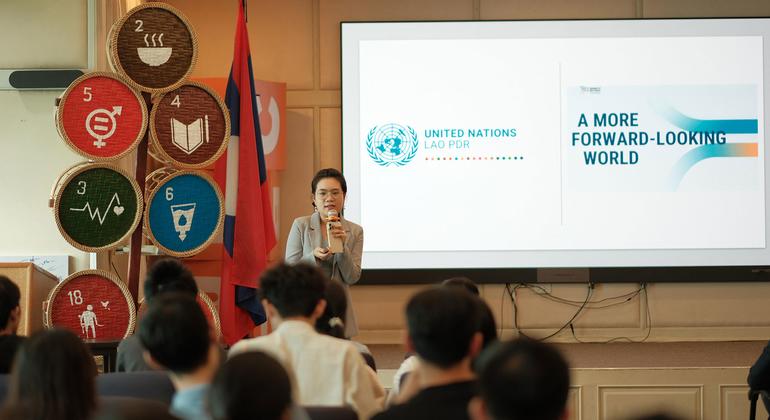“Air quality does not respect limits“Lorenzo Labrador, a scientific officer of the World Meteorological Organization (WMO), said.” The smoke and contamination that the problems of forest fires in this record season in the Iberian Peninsula have already been detected on Western Europe. [and]… can basically travel to the rest of the European continent. “
Presenting the latest Air Wmo Quality and Climate Bulletino That covers data from different global data sets, Mr. Labrador announced a continuous pattern of “degradation” of pollution worldwide.
He pointed out a world map in 2024 that shows revealing markers of fine particles known as “PM 2.5” of forest fires concentrated in deep red spots in Chile, Brazil and Ecuador, along with Canada, Central Africa and Siberia.
The data confirms a disturbing trend in the loss of air quality already indicated in previous years.
“We know that the forest fire season has the tendency to be stronger and longer every year, as a result of climate change,” Labrador explained.
China, Europe provides hope
In more positive news, the OMM scientist stressed a reduction in emissions in some parts of the world, “particularly east of China and Europe, year after year“
“When we see that countries, regions or cities are taking measures to fight against poor air quality, it works“Said Paolo Laj, head of the Global Atmosphere Watch (GAW) program of WMO.
A good example is east of China, in cities like Shanghai, where progress has been made to boost air quality opening more parks and planting more trees.
And although there is still heavy vehicle traffic, many are now electric, said the OMM spokesman Clare Nullis.
Despite these successes, very few cities worldwide have air quality levels below those recommended by the UN World Health Organization (WHO), Mr. Laj de WMO emphasized. “This means that, despite recent improvements, air quality remains an important public health concern. “
He explained that, although the main pollutants such as sulfur dioxide (SO₂) and nitrogen oxide (NOₓ) are decreasing as emission controls are ozone levels at soil level, the main ingredient of the smog has not decreased.
“This is partly a consequence of global warming, since ozone is a secondary pollutant formed through chemical reactions in the atmosphere that require sunlight,” Mr. Laj continued.
Covering forest fires, winter fog, shipping emissions and pollution in urban spaces, the WMO Air Quality Bulletin highlights the close connection between air quality and climate change.
“Climate change and air quality cannot be addressed in isolation. They go hand in hand and must be addressed together to protect the health of our planet, our communities and our economies,” said the General Under Secretary of the OMM, Ko Barrett.
The UN is leading efforts to address home air pollution, which is one of the world's greatest public health threats and particularly harmful to children.
“The good news is that cleaner cooking technology is abundant, relatively economical and already helps save lives,” insisted Martina Otto, head of the Secretariat of Climate and Clean Air Coalition organized by the UN Environment Program (UNEP).
“The challenge now is to put this technology in the hands of more people.. “
The clean convention
The action to address air pollution is also being carried out at the intergovernmental level thanks to the Convention on Pollution of Cross -Border Air of Long Scope. It covers the Paneuropea region and North America, improvements in air quality and has the support of the UN Economic Commission for Europe (UNECE).
Commonly known as the Air Convention, the International Agreement brings together 51 countries that establish legally binding emissions limits to regulate the main air pollutants.
Since its adoption in 1979, the Convention has constantly improved air quality in the region, saving some 600,000 lives annually, says UNECE.
“In Europe, the reductions of emissions achieved have added a whole year to life expectancy,” said the UN agency. “But with much more to do, experts are now working on reviews to further strengthen the measures to reduce air pollution.”
More and more, other regions, especially in East and Seth Asia, but also in South America, seek to learn from the scientific policy model behind the success of the Air Convention in the last 45 years. This work is being provided by initiatives such as the Forum for International Cooperation on Air Pollution.
As part of its mandate, UNECE is also responsible for agreeing on international standards on vehicle emission measurement methods and cleaner fuels.












